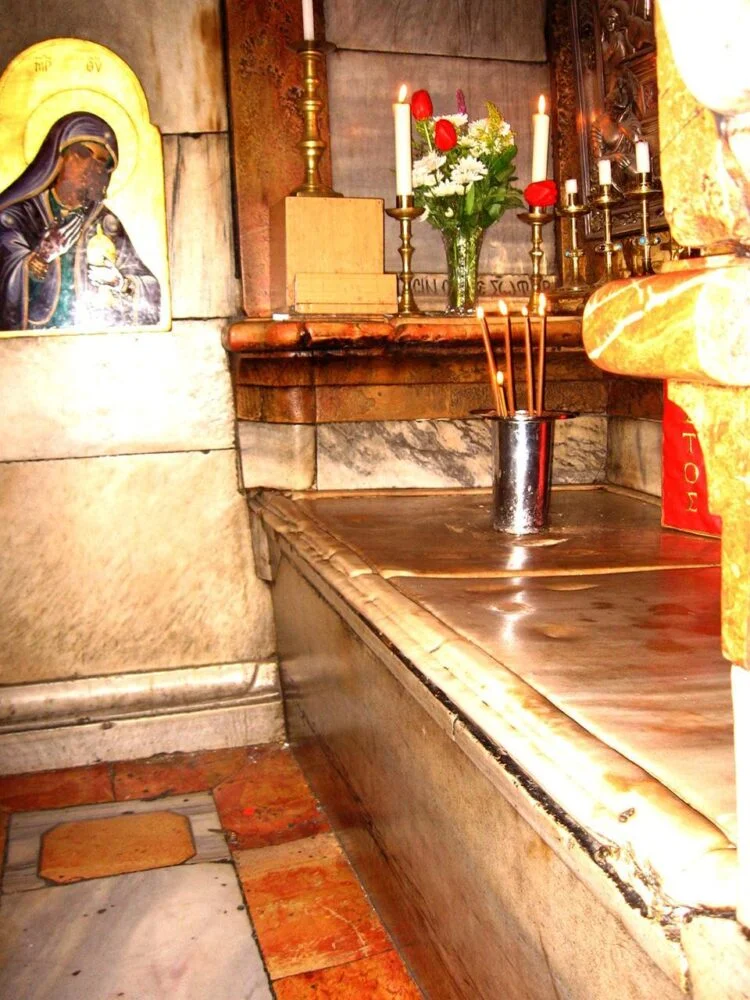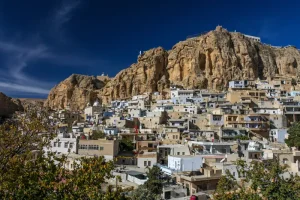April 8, 2025 – Jerusalem
In a groundbreaking discovery, archaeologists have uncovered an ancient garden believed to be the one that once surrounded the burial site of Jesus Christ. This stunning find has the potential to offer new insights into the authenticity of the biblical account of Christ’s burial, resurrection, and the Garden Tomb that many Christians revere as the place of Christ’s entombment.
The garden was unearthed near the Church of the Holy Sepulchre in Jerusalem, an area traditionally associated with the death, burial, and resurrection of Jesus. However, the recent excavation has brought attention to an alternative site – the Garden Tomb – located just outside the city’s walls. This new discovery aligns with long-held Christian traditions about Jesus’ burial and provides tangible evidence that corroborates the scriptural narrative.
Unearthing the Past
The excavation team, which includes top archaeologists and biblical scholars, began their work in the region two years ago after receiving permission from the Israeli Antiquities Authority. Their findings have stunned experts and onlookers alike. Among the garden’s remnants, they discovered a well-preserved rock-hewn tomb, lush vegetation, ancient olive trees, and artifacts such as pottery shards and religious icons dating back to the 1st century.
Dr. Miriam Cohen, the lead archaeologist on the project, stated, “This discovery is unprecedented. The ancient garden closely matches the description of the burial site mentioned in the Gospel accounts, where Jesus was laid to rest in a tomb hewn from rock in a garden.”
In addition to the tomb, the archaeological team uncovered a large stone slab, which could have once been used to seal the tomb’s entrance. While the stone itself was not in its original place, its size and placement offer a fascinating link to the biblical accounts that describe a large stone being rolled away after Jesus’ resurrection.
Biblical Accounts and Archaeological Evidence
The Gospel of John (19:41-42) describes the location of Jesus’ burial as a “garden” near the place of his crucifixion. It was in this garden, according to Christian tradition, that Jesus was laid to rest in a new tomb belonging to Joseph of Arimathea. The garden was likely intended to serve as a peaceful and sacred place for burial in a region known for its burial caves.
The newly found garden contains evidence that aligns with this biblical description. The remnants of an ancient olive grove suggest that this site may have been cultivated for centuries, a practice that was common in Jerusalem during the time of Jesus. Olive trees were considered symbolic in Jewish and Christian traditions, and their presence strengthens the case for this being the authentic burial site.
What makes the discovery even more remarkable is the fact that the Garden Tomb, which is located just outside the city walls, has long been regarded as a potential site for Jesus’ burial. Many pilgrims have visited the site over the centuries, but until now, there has been little concrete archaeological evidence to support the claim.
Dr. Cohen and her team used advanced technology, including ground-penetrating radar and 3D scanning, to confirm the age of the tomb and garden. The evidence suggests that the site dates back to the 1st century, providing compelling support for the biblical narrative. In particular, the stone tomb structure, the garden, and the proximity to the crucifixion site suggest this could indeed be the location of Jesus’ burial.
Photographs of the Discovery
The excavation team has made available a series of photographs that showcase the remarkable findings. In one photograph, the excavation team is seen standing next to the entrance of the rock-hewn tomb, with intricate details of the stonework visible. Another photograph captures the remnants of the olive grove, with ancient olive trees still standing in the garden.
One striking image is that of the large stone slab that was likely used to seal the tomb. The stone, now partially broken but still sizable, is a testament to the power and significance of the events that took place nearly 2,000 years ago.
“These images are more than just historical artifacts; they offer a tangible connection to one of the most pivotal moments in human history,” said Dr. Cohen.
Theological Significance
For Christians around the world, this discovery holds profound theological significance. It serves as a tangible confirmation of the biblical narrative and offers a glimpse into the sacred landscape where the most important events of the Christian faith took place. For centuries, the Church of the Holy Sepulchre has been the primary site of Jesus’ crucifixion and burial, but this new find opens the door to further reflection on the authenticity and location of these pivotal events.
Many Christian pilgrims already visit the Garden Tomb as an alternative site of pilgrimage, and this discovery may draw even more attention to its historical and religious significance. The presence of the garden, along with the evidence of a tomb hewn from rock, strengthens the case for the Garden Tomb as a likely location for Jesus’ burial.
Dr. David Simms, a theologian and expert in early Christian history, noted, “This discovery does not just confirm the physical reality of the biblical account; it invites us to reflect on the profound meaning of Christ’s resurrection. For Christians, this is the ultimate site of hope, redemption, and the triumph over death.”
Conclusion
The discovery of the ancient garden near Jesus’ burial site is a remarkable and potentially faith-affirming event that bridges the gap between history and tradition. As archaeological evidence continues to support the biblical account of Jesus’ death, burial, and resurrection, this finding adds another layer of depth to the enduring legacy of one of history’s most influential figures.
With photographs documenting the discovery, the evidence speaks for itself, offering both scholars and pilgrims alike a powerful connection to the past and to the foundations of Christian faith. As we move forward, this discovery may open new paths of exploration, dialogue, and reflection on the rich history of Jerusalem and the life of Jesus Christ.







Be First to Comment